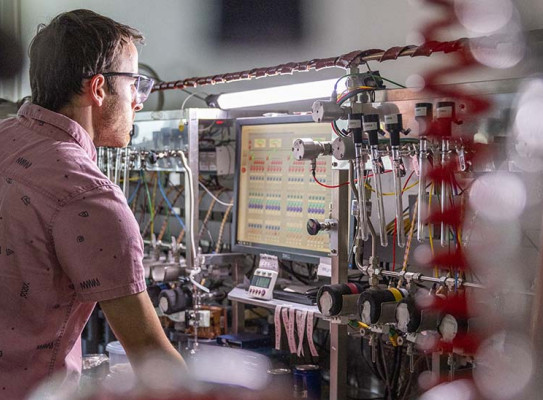
Combatting bioplastic greenwashing with new authentication methods

A recent study by GNS scientists, in collaboration with Scion and the Zhejiang Academy of Agricultural Science (Hangzhou, China), revealed that 50 per cent of in-market bioplastics don’t meet their eco-friendly claims.
The study analysed a range of plasticware samples from New Zealand and China and found that very few of the samples were 100 per cent bioplastic, with most around 30 per cent, and some as low as 6 per cent bioplastic.
Currently, bioplastics are authenticated using radiocarbon (14C) dating – measuring the radioactive decay of carbon can verify whether the plastic is made from plants, fossil fuels or petroleum polymer by the age of the material. For GNS, “It’s one of the bread-and-butter tasks for our Rafter Radiocarbon Lab,” says Jocelyn Turnbull.

"However, there is no worldwide standard for the authentication of bioplastics, and the definitions and policies surrounding bioplastic vary significantly. For New Zealand, this means both consumers and manufacturers rely on external certifications of bioplastic.
"Our study proposes a new way to use rapid, low-cost authentication analyses that could increase the ability of routine testing and checking of bioclaims," she said.
there is no worldwide standard for the authentication of bioplastics...for New Zealand, this means both consumers and manufacturers rely on external certifications of bioplastic.
During the study, Karyne Rogers, Jocelyn Turnbull, and the teams at the Rafter Radiocarbon and Stable Isotope laboratories, applied stable isotope analysis for a new and novel test of bioplastic status. It is a cheaper and faster diagnostic tool than radiocarbon dating, serving well as an initial screening tool.
GNS also collaborated with Scion to apply tritium analyses to bioplastics for the first time. The concept uses the same principle used for radiocarbon authentication, but in this case targets hydrogen rather than carbon in the plastics. The tritium method is still under development and is not yet a routine measurement.
“We are world-leading in using dual isotopes (carbon and hydrogen) to authenticate bioplastics and develop criteria for their identification… Our methods ensure that the bioplastics industry remains accountable for their products and claims, and that scientific evidence is available to detect and prevent fraud,”
Our methods ensure that the bioplastics industry remains accountable for their products and claims, and that scientific evidence is available to detect and prevent fraud
Scion’s Dr Stefan Hill says GNS has shown effective methodology and he would like to see the two tests adopted alongside radiocarbon dating as international standards.
“We want them [consumers and businesses] to be aware these methods are available at GNS,”
